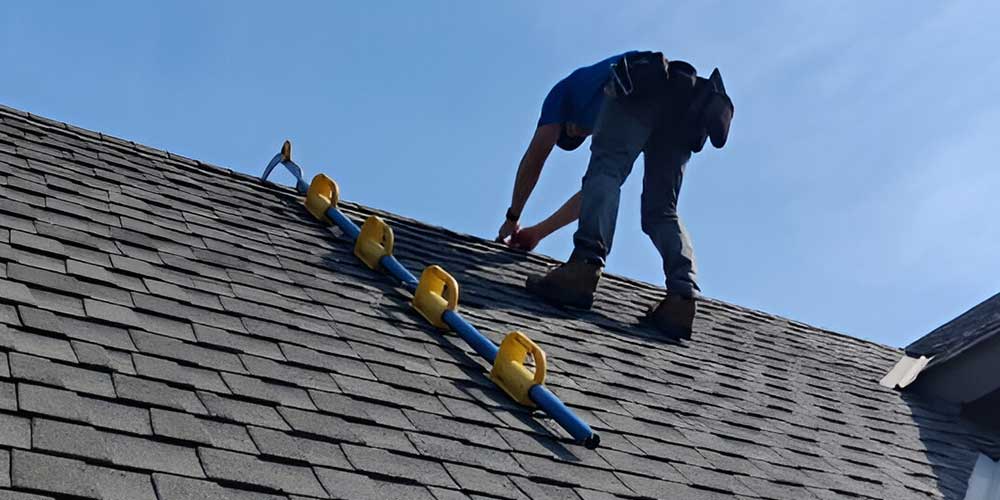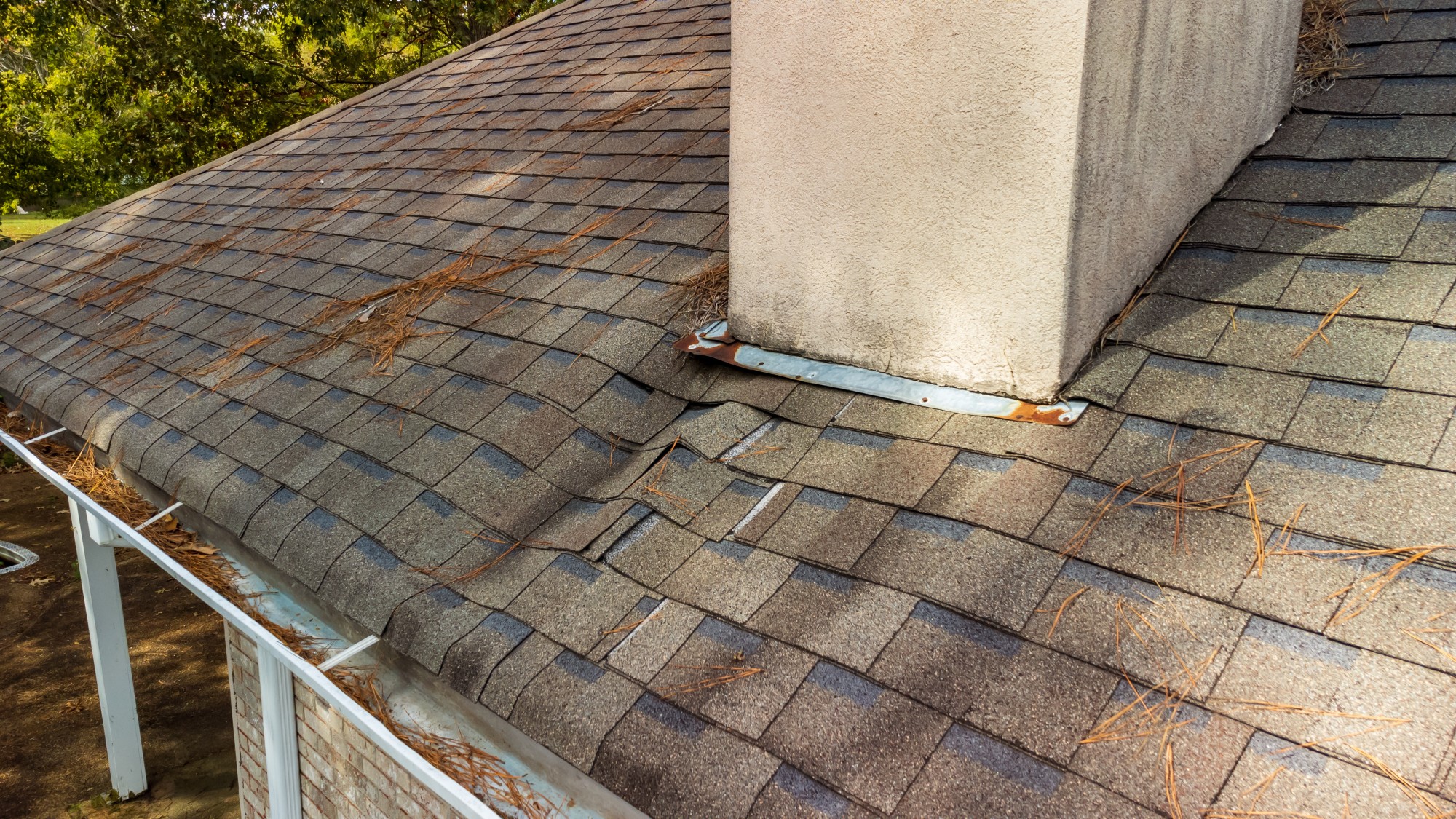Roof Repair Oahu: Specialist Roof Services for Lasting Defense
Roof Repair Oahu: Specialist Roof Services for Lasting Defense
Blog Article
Recognizing the Various Kinds Of Roof Coverings: A Comprehensive Guide for Homeowners
With a selection of choices-- ranging from the traditional gable to the contemporary flat-- each kind presents unique advantages and challenges that should align with the house owner's particular requirements and ecological factors to consider. As we discover the ins and outs of various roofing types, it ends up being noticeable that one dimension does not fit all; the best choice might stun you.
Saddleback Roof
Saddleback roofs, characterized by their triangular form, are among one of the most popular roof covering styles as a result of their simpleness and effectiveness in shedding water and snow. This design features two sloping sides that satisfy at a ridge, permitting reliable water drainage and lessening the risk of water build-up. The steep pitch commonly related to saddleback roofs improves their capability to manage hefty precipitation, making them suitable for different environments.
In addition to their functional advantages, saddleback roofs supply aesthetic versatility. They can be adjusted to different architectural designs, from traditional to contemporary homes. The layout can additionally accommodate added features such as dormer windows, which enhance all-natural light and air flow in the attic room room.
In addition, saddleback roofs offer enough space for insulation, contributing to power efficiency. Property owners can pick from a variety of roofing materials, consisting of asphalt roof shingles, steel, and floor tiles, even more improving personalization choices.
In spite of their benefits, saddleback roofs may require added support in areas susceptible to high winds or heavy snowfall. Overall, the gable roofing system continues to be a favored option because of its blend of functionality, longevity, and aesthetic charm.
Apartment Roofs
Flat roofs are typically recognized for their minimalist layout and useful applications, especially in commercial and industrial setups (oahu roofing). These roofs include a straight or almost horizontal surface, which enables easy construction and flexible room usage. While they may do not have the aesthetic allure of angled roofs, flat roof coverings supply various advantages, especially in urban settings where making the most of space is vital
Among the key benefits of level roofing systems is their ease of access. House owners can utilize the roofing system space for various purposes, such as roof yards, terraces, or solar panel setups. Additionally, flat roofs are usually much more affordable to maintain and install compared to their sloped equivalents, as they call for fewer products and labor.
Nonetheless, level roofings do existing certain challenges. Proper drain is important to protect against water merging, which can result in leakages and structural damages. Thus, picking premium waterproofing materials and normal inspections are critical for guaranteeing long life. Usual products used for level roofs consist of built-up roofing (BUR), customized asphalt, and single-ply membrane layers, each offering distinct advantages. In general, flat roofing systems serve as a adaptable and useful option for several home owners and services alike.
Hip Roofings
Hip roofs are characterized by their sloped sides that assemble at the top, creating a ridge. This layout stands out from gable roofings, as all four sides of a hip roofing system slope downwards towards the wall surfaces, giving a more steady framework. The angle of the inclines can vary, enabling versatility helpful site in architectural looks and capability.
One of the key benefits of hip roofs is their ability to withstand hefty winds and unfavorable weather problems. The sloped surfaces allow better water drain, reducing the threat of leaks and water damages. Additionally, hip roofing systems supply enhanced attic room, which can be utilized for storage or perhaps converted right into habitable areas.
However, constructing a hip roofing system can be more expensive and complex than easier roofing types, such as saddleback roofs. The added product and labor entailed in developing the slopes and making certain proper architectural integrity can cause higher expenditures. In spite of these downsides, several property owners favor hip roof coverings for their longevity, aesthetic allure, and capacity for energy efficiency.
Mansard Roofing Systems
Mansard roofing systems, usually identified by their distinct four-sided layout, attribute two slopes on each side, with the lower incline being steeper than the top. This building style, stemming from France in the 17th century, is not just visually appealing but practical, as it takes full advantage of the useful area in the upper floors of a structure. The steep lower slope enables even more headroom, making it an excellent option for lofts or attics, which can be converted into living areas.
Mansard roofing systems are defined by their versatility, accommodating various architectural designs, from traditional to contemporary. They can be constructed with various materials, consisting of asphalt roof shingles, slate, or metal, providing home owners with an array of alternatives to fit their budget plans and preferences. In addition, the design allows for the integration of dormer windows, boosting all-natural light and air flow in the top degrees.
Nevertheless, it is necessary to think about the prospective downsides. Mansard roof coverings may need more upkeep due to the complexity of their design, and their steep slopes can be challenging for snow and rain runoff. On the whole, mansard roofing systems integrate elegance with functionality, making them a preferred choice among house owners looking for distinct architectural functions.
Shed Roofing Systems
As house owners significantly look for simplicity and performance in their building designs, dropped roof coverings have actually become a popular selection. Defined by a single sloping airplane, a shed roof covering offers a minimalist visual that complements various home designs, from modern to rustic.
One of the primary advantages of a shed roof is its uncomplicated building and construction, which typically converts to lower labor and material expenses. This style allows for efficient find out water drain, lowering the threat of leakages and water damage. Furthermore, the vertical incline offers enough room for skylights, boosting all-natural light within the inside.
Dropped roofing systems additionally offer adaptability in regards to usage. They can be effectively integrated into enhancements, garages, or outside structures like sheds and structures. Moreover, this roof design can suit numerous roof materials, consisting of steel, asphalt roof shingles, and even eco-friendly roof coverings, straightening with green efforts.
Nonetheless, it is important to think about regional climate conditions, as hefty snow tons may necessitate adjustments to the roof covering's angle or framework. Generally, dropped roof coverings offer a practical and aesthetically pleasing alternative for house owners seeking to make the most of functionality without jeopardizing design.
Final Thought


Gable roofing systems, defined by their triangular shape, are amongst the most preferred roofing designs due to their simpleness and efficiency in shedding water and snow. oahu roofing. The high pitch frequently linked with gable roofing systems enhances their capability to manage heavy rainfall, making them check this suitable for numerous environments
While they might lack the aesthetic allure of pitched roof coverings, level roofings supply countless benefits, specifically in metropolitan environments where making best use of area is important.

Report this page